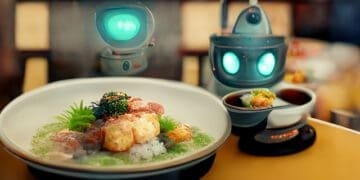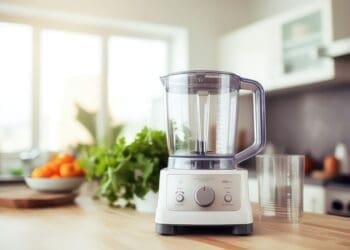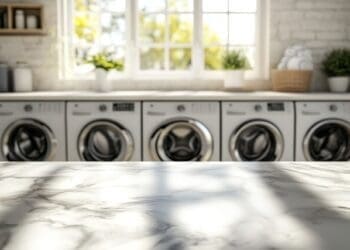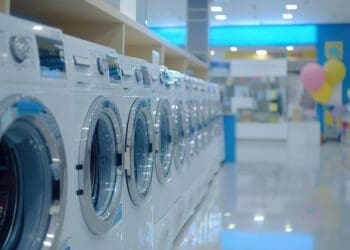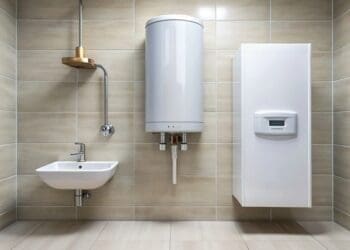A kitchen robot can prepare meals in as little as four minutes and serve up to 600 meals daily. The robotic chef Beastro at Florida International University shows these impressive capabilities with its 70 different customizable dish options. The robot handles four meals at once and cleans itself after each cooking session.
Robotic chefs like Nala work around the clock and recreate dishes with machine-like precision. We need to understand their actual capabilities and limitations clearly. These technologies are becoming common in commercial kitchens, so it’s significant to get into what these robots can and cannot do.
This piece will take you through the current state of kitchen robotics technology and break down their recipe execution abilities compared to human chefs. You’ll learn about the technical challenges these systems face, which will help you understand the true potential and limitations of today’s robotic cooking systems.
Current State of Kitchen Robotics Technology

Kitchen robots today show amazing technical sophistication in their design. These systems use dual-arm manipulation platforms that control complex cooking tasks with precision.
Core capabilities of modern robotic chefs
Modern robotic chefs can do impressive things in the kitchen. The newest models analyze more than 1,200 parameters every microsecond to control cooking with precision. These systems can cook up to 5,000 different meals and adapt to different cuisines and dietary priorities.
Having fun with this context. I have other articles about this topic. Discover more!!!!!
Sensor and control systems overview
Kitchen robots’ sensory framework uses many sophisticated parts. These systems combine tactile sensors, contact monitors, and proximity detectors to track tasks and movements. The robots maintain exact control through closed-loop systems that adjust cooking based on immediate feedback.
Machine learning integration in cooking
Advanced algorithms make machine learning the foundation of robotic cooking capabilities. Research from the University of Cambridge shows robots can learn recipes by studying cooking videos frame by frame. Their system achieved 93% accuracy in recipe recognition by using neural networks to process visual data. These robots use two key technologies – YOLO for object detection and OpenPose to analyze human cooking movements.
Computer vision helps kitchen robots spot ingredients, watch cooking progress, and adjust things right away. These systems get better at cooking over time through continuous learning, just like human chefs do. The robots can spot recipe changes, like bigger portions or different ingredients, without mixing them up with new dishes.
Recipe Execution and Food Handling

Kitchen robots show amazing versatility in food preparation. Advanced models can prepare over 200 different dishes.
Types of dishes robots can prepare
Modern robotic chefs excel at preparing food of all types, from regional Chinese specialties to Italian favorites. These systems handle multiple cooking techniques. We focused on:
- Stir-frying and sautéing
- Steaming and stewing
- Pasta and sauce preparation
- Simple ingredient processing
- Soup and bisque making
Ingredient manipulation limitations
Kitchen robots face several challenges when handling ingredients. These systems can’t match human dexterity and struggle with delicate tasks that involve irregular-shaped or moisture-rich foods. The robots need precise ingredient placement and pre-measured components to work properly.
I am glad you are enjoying this content… I have other articles related to this topic… Click Here
Temperature and timing control accuracy
Temperature management stands out as robotic cooking systems’ strength. Advanced models maintain exact control through induction heating and can reach temperatures up to 180°C. These systems work with impressive efficiency. They prepare up to 60 dishes per hour while using 50% less energy and 60% less oil.
The robots use sophisticated timing mechanisms to coordinate multiple dishes. To cite an instance, see how some models prepare four meals at once, finishing each dish in about 2-3 minutes. This precise timing includes self-cleaning features, as many systems clean their cooking surfaces automatically after each use.
Performance Analysis and Benchmarking

Test data shows the sort of thing i love about kitchen robot metrics. The controlled tests demonstrate that automated cooking systems can prepare basic dishes – rice takes 45 minutes, beans need 64 minutes, and okra soup requires 14 minutes.
Speed and consistency metrics
Kitchen robots work amazingly well at high volumes and can serve up to 600 meals each day. These systems deliver consistent results when they follow programmed recipes with precise measurements and timing. The robotic chefs handle multiple orders at once during rush hours. We reduced preparation time by 40% compared to traditional cooking methods.
Quality comparison with human chefs
Kitchen robots score above average quality ratings but they are nowhere near as good as human chefs. Customers see robot-cooked food as less flavorful, particularly in upscale restaurants. This gap becomes more obvious with complex dishes that need advanced cooking expertise.
Error rates and failure modes
Research shows several common patterns where robotic cooking systems fail. The biggest problems include:
- Navigation errors (15% of failures)
- Manipulation difficulties (25% of failures)
- Hardware malfunctions (7.5% of failures)
- Recipe interpretation issues (9.3% of failures)
Error rates drop by a lot in controlled environments with optimal conditions – navigation errors fall to 4% and manipulation errors decrease to 13%. Proper setup and maintenance is a vital part of getting the best performance.
Technical Limitations and Challenges

Simple technical challenges shape the actual capabilities of automated cooking systems. Kitchen robots face specific problems that affect their use in commercial settings.
Ingredient recognition constraints
Kitchen robots have trouble identifying and handling ingredients with different textures, shapes, or moisture levels. These systems struggle with delicate items like avocados and cooked salmon. Human hands often need to step in for proper placement. The robots can’t smell or taste to check ingredient freshness or do vital safety checks.
Complex task coordination issues
Robotic systems find it hard to coordinate multiple cooking tasks. We tried to make them perform advanced techniques like dicing, chopping, or sautéing. Many cooking steps that need precise timing or texture checks are still out of their reach.
Safety and maintenance concerns
Kitchen robots need careful attention to stay in good shape:
- Cameras and sensors need regular cleaning to avoid dust and grease buildup
- Nuts, bolts, and end effectors require inspection to prevent physical contamination
- Mechanical joints can jam or fall out of line and need monitoring
These systems need more than simple cleaning. They require preventive care to stop position drift and repeatability problems. Safety risks include hardware failures that could cause accidents or contaminate food.
Technical support creates another big challenge, especially when robots break down. Many manufacturers are small startups with limited service teams in specific areas. This leads to long downtimes when problems pop up. Restaurants far from manufacturer headquarters face even bigger delays as technicians must travel for repairs.
Conclusion
Kitchen robots show amazing tech progress, but reality is different from what sci-fi promised. Our analysis found that these automated systems are great at controlling temperatures and following recipes. They can make hundreds of meals each day with remarkable efficiency.
These robotic chefs have important limitations. They don’t deal very well with handling delicate ingredients and complex cooking methods that human chefs do naturally. Their success depends on controlled settings where ingredients are measured beforehand with specific setup needs.
The performance numbers paint an interesting picture. Robots cut prep time by 40% and keep the output quality steady. Yet they can’t match a human chef’s expertise, especially when cooking complex dishes that need advanced skills. Issues like ingredient recognition limits and upkeep requirements show the gap between what robots can do now and what they might do later.
We have a long way to go, but we can build on this progress. Kitchen robots will work alongside human chefs instead of replacing them. They excel at repetitive tasks and keep quality consistent in busy kitchens, which makes them perfect for specific commercial operations. As tech gets better, we expect to see improvements that fix current limits while keeping the human touch in cooking.
FAQs
Q1. What are the main capabilities of kitchen robots?
Kitchen robots can prepare a wide variety of dishes, from stir-fries to pasta, with precise temperature control and timing. They can handle multiple orders simultaneously, serve up to 600 meals daily, and even self-clean after use.
Q2. How do kitchen robots compare to human chefs in terms of performance?
While kitchen robots are efficient and consistent, they still fall short of human chefs in terms of food quality, especially for complex dishes. Robots can reduce preparation time by 40%, but customers generally perceive robot-cooked food as less tasty, particularly in luxury dining settings.
Q3. What are the primary challenges faced by kitchen robots?
Kitchen robots struggle with delicate ingredient handling, complex cooking techniques, and ingredient recognition. They also face difficulties in coordinating multiple tasks and performing advanced culinary skills like dicing or sautéing.
Q4. Are there any safety concerns with kitchen robots?
Yes, there are safety concerns related to potential hardware malfunctions that could lead to accidents or food contamination. Regular maintenance is crucial, including cleaning of cameras and sensors, inspection of components, and monitoring of mechanical joints to prevent issues.
Q5. What is the future outlook for kitchen robots in the culinary industry?
Kitchen robots are likely to complement rather than replace human chefs. They excel at handling repetitive tasks and maintaining consistency in high-volume operations, making them valuable for specific commercial kitchen applications. As technology advances, we can expect improvements in their capabilities while still maintaining the irreplaceable human element in culinary arts.
